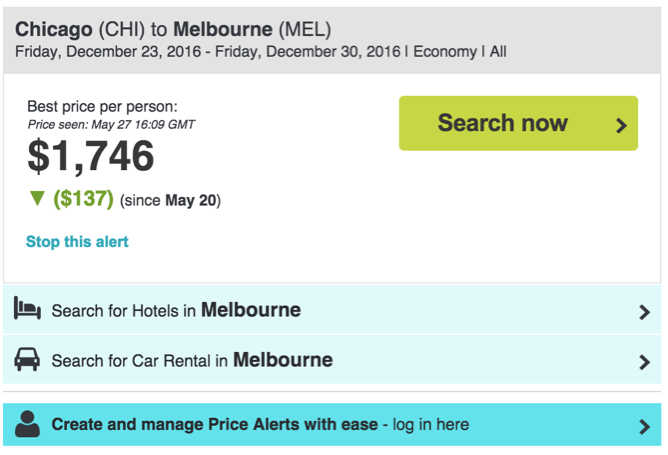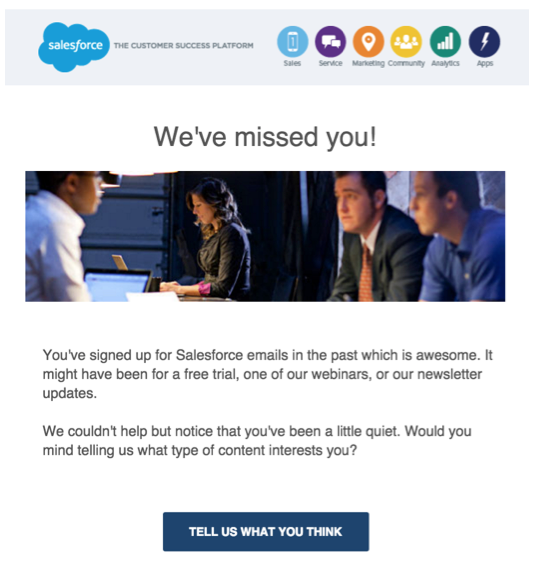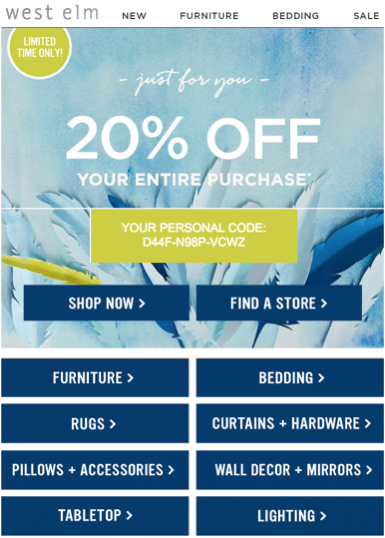The wave of 1-to-1, personalized marketing is in full effect. One-to-many marketing (one brand marketing to an audience of many) has flipped and individual consumers have more decisions to make, like, "Which companies do I interact with, invest in, spend time with, and become loyal to?"
Individual customers are exposed to hundreds of brands daily and more and more, they cast their loyalty with their fingertips and smartphones. It's more about convenience and customer service when the need or buying moment strikes. So now, brands are hustling to figure out how to reach individuals at scale. The companies-actually, the service providers-are excelling are developing processes and adopting technology to help them make decisions that are triggered by customer behavior. Instead of creating one campaign or message at a time, they're developing platforms and a smart series of messaging that is flexible and observant to stay relevant and helpful. The results? unique, personalized experience for every individual.
But the question arises: Can marketers truly be personal at scale?
Yes, but...there's always a but. The minute scale--or communicating with broad reach--comes into play, there are risks to watch for before communication becomes mass-communication or impersonal...again (gasp!). You can truly be personal at scale with these tips to keep your customers' brand experience individualized and relevant, thus garnering loyalty:
- Keep your goal top of mind. Continually bring your goal, and your customers' goals to the forefront. Remember that their goals may change and your objective is to provide optimal service to them when they do.
- Strategize when and how to be personal. Being personal doesn't mean trying to replace a customer's best friend, or assuming you know everything about them all the time. Being personal takes tact and respects boundaries. Pay attention to content and channel preferences that customers have shared with you or that they indicate with their behavior.

Notice how this Skyscanner personalized alert was customized by the customer --they chose when to get an alert (when prices dropped or rose), how often to receive the alert, which route to be alerted for, and they were given a clear option to stop the alert right in the message itself.
- Be careful not to over-personalize in an attempt to get every minute of of a customer's attention. Don't forget, your goal (#1 above) is to be there when they need you--sometimes that means not more, not less.
- Monitor changes in behavior. Put processes and technology in place to pay attention to customer behavior. If a customer hasn't opened or engaged with your last 5 messages, it may be time to evaluate why, slow down communications, send a survey, or change up your strategy. Take some time to run tests and observe customer behavior when developing your personalized strategy.

Salesforce sends a survey if a subscriber hasn't engaged with emails for a specified period of time. This helps us deliver the most relevant content and continue to provide value in the inbox.

Anthropologie sends emails based on customer size data from previous purchases and creates relevancy by calling out Petites in the Subject Line.
- Carefully craft your message. Plan a messaging strategy that takes into consideration the channel, time of day, day of week, and even recent events in your customer's life or account activity. For example, a customer might have privacy concerns about a web retargeting ad related to a bill that they owe. Instead, a helpful retargeting ad that appears while they're browsing online may provide tips on how to make the most of your account--a softer approach with the same goal.
- Mainstream tools are not catalysts for cutting corners. While you may be running a campaign on Facebook to reach a broad audience that fits similar criteria with the same message, consider that similar people may use the platform in very different ways. Carefully evaluate your targeting criteria and different scenarios that might warrant unique messaging for several smaller audiences using the same channel differently.
- Tone is telling. Customers can be turned on to a brand because of their tone (think Buzzfeed, TheSkimm, Toms). But they can just as easily be turned off by copy that appears to be invasive, raise questions about privacy, or seems out of line on a particular platform or at a particular time. Which brings us to the next topic.
- Timing is everything. Copywriters and marketers may spend months developing personalized messages perfectly planned out in an editorial calendar. Then, a worldly or pop culture event can pop up and suddenly the topic and tone can seem out of turn. This can be turned into an opportunity for a brand to become personal, relating their brand to the news, and relating to their customers. Developing a flexible messaging program, such as a journey through Journey Builder, can help brands adjust as needed to remain relatable and sensitive to priorities in their customers' worlds.
Or, think of timing on an individual level. A well-known dating website sent an email to customers on their birthday encouraging them to log on to find a birthday date. While this was a nice attempt at personalization, the email could have been sent further in advance to be effective. Sensitivities to age and dating would also come into play here for consideration and could turn a customer off. Now, this company might be getting just a little too personalâ¦
- Effort counts, they're (and we're) human too. While personalized marketing strategies may involve constant testing to refine, a little effort goes a long way. As a consumer, when a brand remembers my name, sends me a birthday treat, asks for my feedback after a customer service call, or recommends products, I feel special and valued as a customer, and I appreciate the effort-even if the products weren't exactly what I was in the market for.

West Elm's Subject Line: Pssst...this one's just for you and their personal discount code front and center creates a feeling of exclusivity and a personalized experience.
- Test it out. Test personalization strategies. While first and last names can be dynamically populated in emails, maybe it's just a bit much for an email from the restaurant down the street to include both-where we're on a first name basis.
For example: A customer may check the majority of a company's emails in the morning when they're on the train but they've purchased multiple times from them on Sunday evenings. Maybe Sunday nights would be the most personal time to reach the customer next time
Or, it's possible that an adult customer purchased children's clothing from a brand for a gift and the customer doesn't have children. How can this information (or previous purchase history) be gathered to send relevant products (adult clothing) in future messaging? Think outside the box when it comes to testing personalization strategies.
- Review individual results, not just cumulative. When running marketing reports, take a look at individual customer behavior trends in addition to aggregate campaign engagement data, such as customers who read every SMS message, but only open emails with coupons.
- Identify patterns in behavior. Which message types (product recommendations, those with personal purchase or account information, birthday emails) received the most engagement and had the most positive impact on the bottom line-in addition to customer retention? Try to identify patterns and lifestyle or brand-customer relationship lifecycle moments. For example, adding another user to an account, change of address, or making a second purchase may signal opportunities to personalize your customer-brand relationship in new ways.
Are you ready to be personal at scale? Check out more tips and tactics for delivering 1-to-1 personalized customer journeys. Download the 2016 State of Marketing report.




